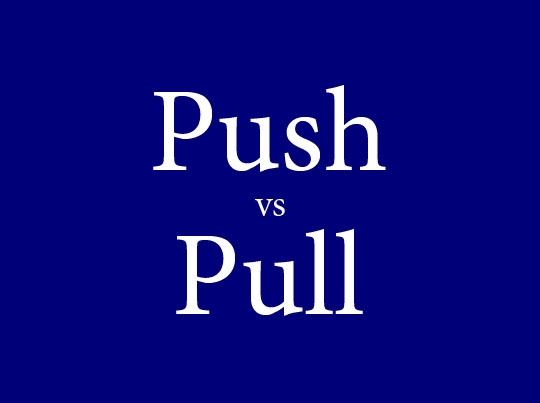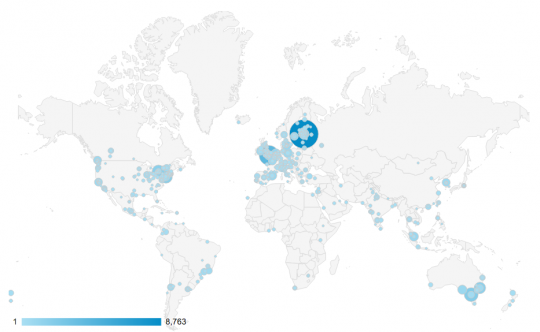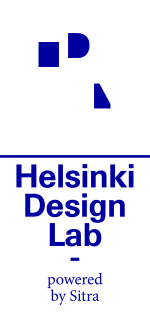All posts
Readers, followers, collaborators, friends: thank you for your interest and support over the years. And thanks to Sitra, without whose support HDL would literally not exist. With this blog post Helsinki Design Lab is officially in hibernation.
We each maintain our interest in strategic design, so please stay in touch. And please do take advantage of the resources made available here under a Creative Commons license: HDL is yours now.
After much thought, there's no better way to end than to borrow words from the great poet Robert Frost, whose poem Riders was introduced to us by Carl Mossfeldt at HDL Global 2013.
The surest thing there is is we are riders,
And though none too successful at it, guiders,
Through everything presented, land and tide
And now the very air, of what we ride.
What is this talked-of mystery of birth
But being mounted bareback on the earth?
We can just see the infant up astride,
His small fist buried in the bushy hide.
There is our wildest mount--a headless horse.
But though it runs unbridled off its course,
And all our blandishments would seem defied,
We have ideas yet that we haven't tried.
This might be the most common question we've received lately, so as we prepare to close out HDL and this blog we want to share some thoughts on the subject. Below I dip into the weeds a bit with some macro thoughts on social change but, if you can stick with it, I do actually answer the question eventually.
Organizations, like Sitra, think about the world and the impact they want to create, which is usually expressed in a mission statement. This describes the world we would like to see. On a more frequent basis we define strategies that represent our best guess about how we will most likely be able to achieve the impact we believe is important.
And while these missions and strategies may be well formulated, they do not always necessarily match up with society. Indeed, a good bit of the value of an independent organization like Sitra is that it has the mandate and resources to think about things which are not on the top of society's mind right this moment.
But this also creates a challenge: Sitra represents approximately 120 out of the 5.4 million people who live in Finland. How do the actions of 0.0022% of a country create meaningful change?

Organizations like ours often try to push society. We prepare reports and studies that compile the facts, and those facts in turn lay out a case for change. By launching programmes and initiatives we attempt to push individuals and other organizations to behave differently—to seek different outcomes.
With the HDL projects we've been testing a different approach, one that works by pulling individuals and organizations towards our vision. In a time of low signal-to-noise ratio—when there's lots of noise—being smart and having the facts is not enough. We also have to provide an offering that is so compelling, perhaps even seductive, that it can attract attention and interest of collaborators.
Push makes sense when you know exactly what the market wants (be it a literal market or a 'market of ideas'). Pull makes sense in a more dynamic context, or when cash and/or authority are limited.
When we think about social change through the lens of push and pull, I offer the anti-smoking campaigns of 20th century as an example of push. Reducing the prevalence of smoking in society was a massive effort that was not aligned with the popular culture and media of the time, it also ran counter to the interests of some large corporations. There was significant inertia that resisted a specific and desired change: namely lowered tobacco usage rates. Affecting this change required prolonged effort on behalf of countless organizations. The movement had to be created more or less from scratch. Societies across the western world and beyond were literally pushed towards a different baseline behavior: from smoking as an acceptable norm to a default of non-smoking in many places.
To understand social change through pull, Facebook offers a good example. The world's largest social network is used by over one billion people and as much as the platform itself is a piece of technology, that technology has begun to change the world around it. Facebook affects how people convene for events, celebrate birthdays, spread gossip, and, according to the NSA in the US, how terrorism operates. All of this has happened relatively quickly and with very little money spent on attracting attention through traditional means such as marketing—Facebook did not grow through a push strategy. Instead Facebook offered something that was so attractive it pulled people in.
Without trying to valorize a particular company, what we've taken from this observation is a recognition of the competitive landscape that good ideas have to survive today. Good ideas are not enough anymore. Rarely does any one group have enough money to push ideas into the world anymore; rarely does any one group have the requisite authority to create meaningful social change by fiat.
HDL does not have the means to affect change on its own. Sitra does not have the means to affect change alone. The whole of Finland does not have the means when we think about the large scale issues such as climate! Therefore our projects have been an experiment in pulling participants, collaborators, and onlookers into projects. We pursued a pull strategy because it gave us a plausible way to leverage deeper flows of change within Finnish society.
Back to the original question: how did HDL select its projects?
The answer is that we looked for opportunities that lay between the vision that Sitra has for Finland's future and the interests of Finnish society right now. Within that opportunistic space the real challenge is not identifying a potential area or subject to work on, but to find the vehicle of change that has a high possibility of success.
A concrete example is Low2No. Sitra's interest in sustainable well-being means that we will need to address many (if not most) aspects of our economy and how we live together on a finite planet. Citymaking, the focus of Low2No, is as good of a place to start as any! We had indications that a project focusing on sustainable city making was well-timed to pull interest from the communities of development, real estate, construction, and design in Finland. When we began Low2No we were also considering a relocation of the Sitra office, so this also gave us the opportunity to address multiple needs at the same time, and for our organization to have some skin in the game.
Open Kitchen provides another example. Although Open Kitchen is ostensibly about food in Helsinki, our motivations were in addressing the sustainability of consumer choices in Finland (starting with diet), strengthening everyday entrepreneurism, and in creating proactive opportunities for new generations of immigrants to knit themselves—and be knitted—into Finnish society. Those same goals could have been addressed with a project that focused on groceries instead of street food, or even a focus-area that has nothing to do food, such as small retail shops. The reason we chose food is because there was already an existing groundswell of interest in food thanks to the successful Ravintolapäivä festival.
The project was Open Kitchen because food was a hot topic in Finnish society and our agnosticism about the content allowed us to connect our strategic goals to a variety of potential vehicles. If cycling were the thing, or meanwhile usage of spaces, or pop-up shops, or childcare, or energy, or anything else were the hot topic we would have developed Open Cycling, Open Spaces, Open Shops, etc. instead, leveraging the interest of the community. These stand a better chance to pull in the attention of finnish society, saving us from the need to create attention and interest in our subject, before we can even begin to generate interest in our project, before we can even hope to have a successful project.
How did HDL select its projects? By looking for opportunities where we could inflect existing energy within Finnish society towards the strategic priorities of Sitra and our assessment of what will be critical for Finland's vitality in the future. The financiers aren't the only ones who can enjoy the benefits of leverage.
For more on choosing vehicles for change, see the introduction chapter to Legible Practises. Readers may also enjoy a brief discussion of using projects and publications as probes to help discover opportunity.
While booting up HDL we took some time to build out the infrastructure for our future work. A central part was this website, helsinkidesignlab.org. We've already shared some of the statistics, so this post details how the website came to be and what we were thinking about when we created it.
Have a clear goal
Our goal with the site was to be "a place for designers to come together to learn more about strategic design and participate in the conversation. The HDL site also needs to serve as a resource to government officials, providing information on what strategic design is and how it can help solve their problems."
Make the goal dead simple
We wanted to be the best, clearest, and most dependable resource for information at the intersection of design and government. The primary content we would share is the story of our own evolving work. Secondarily we would highlight the work of others through cases and blog posts.
Get help
Through various engagements over the span of a few months we worked with BERG London to define the strategy for HDL's website; Brain Traffic to edit and hone the message, tone and voice of our core documents (more on this below); TwoPoints to establish a visual language; and XOXCO and Rumors to manifest all of this as the website you're now reading.
The website was my project and prior to HDL I'd spent years working in pretty much every role involved in creating a website, from programming to journalism. So I felt prepared to handle the project, and I also felt strongly that it was important to get help and make sure that the site was done right.

An example from Rumor's work on the information architecture of the site. They started by thinking through the structure of the site before anything was ever designed.
Be conscious of your audience
In a dream world we wanted to be relevant to everyone. Who wouldn't love strategic design?! We prioritized our audiences up front: other designers would be the first, followed closely by civil servants and politicians, and we wanted our materials to be accessible to interested laypeople.
This is the work of content strategy. Get someone smart like Brain Traffic to help you with it. Here's a snippet from their recommendations:
Tone and voice
Because the subject matter is a bit complex and conceptual, clearly clarifying who you are and what you do is important. Your site needs to sound academic, authoritative, and forward-thinking, yet still accessible and personal. Also, because your site operates similar to a non-profit, it should not sound commercial, because you are not selling a specific product or service.
Core messages
These are some core messages your site should convey:
1. Through strategic design, we offer new ways to solve large-scale, global problems.
2. We bring government and design together.
3. We want to advance the strategic design community.
4. We define problems and help deliver more complete solutions.
5. We take the principles of traditional design and apply them in new ways to "big picture" challenges.
Be realistic about the size of the audience
We anticipated that our audience would be relatively small. The percentage of the web audience that is interested in design is small, and strategic design much much smaller. But that's OK: While we have a small audience, they're generally quite committed—and thirsty for camaraderie and content. Building a website for an audience in the thousands is different from working on a website for the hundreds of thousands or millions. For instance, we opted not to invest in building some kind of social network (despite the desire for connectivity) and instead put our focus on publishing content.
A slow website is a nonexistent website
The web is a firehose of content. Lots of it is bad. While it would be nice to imagine that the good stuff will shine through, there's also a basic battle for attention. If you don't post, you don't exist.
We made a commitment early on to post regularly (in the form of weeknotes). This forced us into the habit of regularly documenting what we're doing, and also ensured that there was a steady stream of content on the site. This way the site would not feel abandoned or stale.
Banners? We don't need no stinking Banners!
As a non-commercial site we're able to free ourselves from the clutter that is imposed on most commercial sites by virtue of their banner ads. Helsinkidesignlab.org has a lot of white space on purpose: we want our readers to have a sense of clarity and focus when visiting the site. We don't need banners, so why have them?
Painless posting
Regular posts would not be easy to imagine without a painless interface for posting new content. Although off-the-shelf systems such as Wordpress are cheap, they can also be ill-fitted to specific situations and clumsy to use. We opted to build our own custom content management system using XOXCO's PeoplePods platform.
Now that the blog is closed (or nearly so) we can reflect a bit on what it was. I asked Ben of XOXCO to take a look at the database and find what details he could dig up. Here's what he found:
Number of posts: 241
Total words published: 128,204
Average words per post: 532
First post on: January 31, 2009
Total number of days the blog was live: 1259
Averaging one post every: 5.2 days
Longest post: Guest Blog: The Takeaway is People (2718 words)
Total comments: 58
Average comments per post: 0.24
If the blog were a printed book, it would come out to about 500 pages of pure text, not including any images or other supporting materials.
One revelation from doing this number crunching is the shockingly low number of comments! Although people did not have much desire to engage, they did read. The readership grew nicely over time to level out around 5000 visitors per month:

January 2009—September 2011 (the dive at the end is due to switching from the old website to this new one)
And over that span of time we saw healthy traffic from six continents, with clear clusters around Helsinki, London, the east coast of the US, and southern Australia.

Geographic location of visitors, courtesy of Google Analytics



